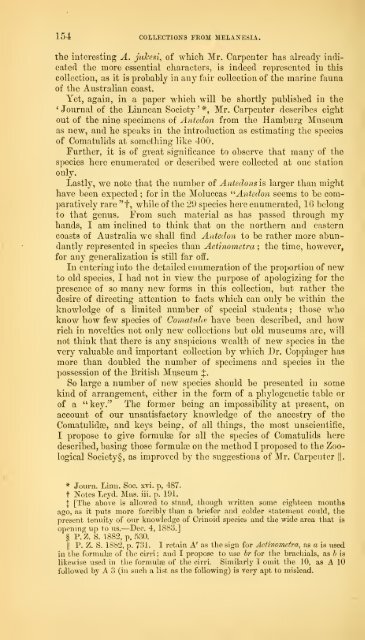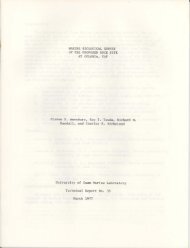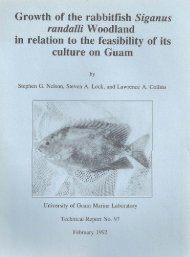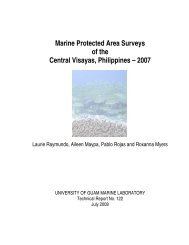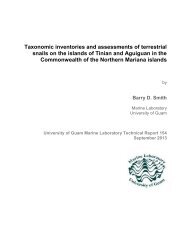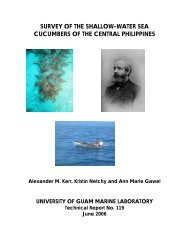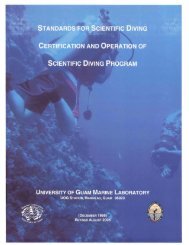You also want an ePaper? Increase the reach of your titles
YUMPU automatically turns print PDFs into web optimized ePapers that Google loves.
154 COLLECTIONS FROM MELANESIA.<br />
the interesting A. julrsi, of which Mr. Carpenter has already indi-<br />
cated the more essential characters, is indeed represented in this<br />
collection, as it is probably in any fair collection of the marine fauna<br />
of the Australian coast.<br />
Yet, again, in a paper which will be shortly published in the<br />
' Journal of the Linnean Society ' *, Mr. Carpenter describes eight<br />
out of the nine specimens of Antedon from the Hamburg Museum<br />
as new, and he speaks in the introduction as estimating the species<br />
of Comatulids at something like 400.<br />
Further, it is of great significance to observe that many of the<br />
species here enumerated or described were collected at one station<br />
only.<br />
Lastly, we note that the number of Aiitedonsis larger than might<br />
for in the Moluccas "Antedon seems to be com-<br />
have been expected ;<br />
paratively rare "t, while of the 29 species here enumerated, 16 belong<br />
to that genus. From such material as has passed through my<br />
hands, I am inclined to think that on the northern and eastern<br />
coasts of Australia we shall find Antedon to be rather more abundantly<br />
represented in species than Actinometra ;<br />
the time, however,<br />
for any generalization is still far off.<br />
In entering into the detailed enumeration of the proportion of new<br />
to old species, I had not in view the purpose of apologizing for the<br />
presence of so many new forms in this collection, but rather the<br />
desire of directing attention to facts which can only be within the<br />
knowledge of a limited number of special students ; those who<br />
know how few species of Comatida' have been described, and how<br />
rich in novelties not only new collections but old museums are, will<br />
not think that there is any suspicious wealth of new species in the<br />
very valuable and important collection by which Dr. Coppinger has<br />
more than doubled the number of specimens and species in the<br />
possession of the British Museum j.<br />
So large a number of new species should be presented in some<br />
kind of arrangement, either in the form of a phylogenetic table or<br />
of a "key." The former being an impossibility at present, on<br />
account of our unsatisfactory knowledge of the ancestry of the<br />
Comatulidae, and keys being, of all things, the most tmscientific,<br />
I propose to give formulae for all the species of Comatulids here<br />
described, basing those formulae on the method I proposed to the Zoo-<br />
logical Society§, as improved by the suggestions of Mr. Carpenter ||.<br />
* Jouni. Linn. Soe. xvi. p, 487.<br />
t Notes Leyd. Mus. iii. p. 191.<br />
\ [The above is allowed to stand, though wi'itten some eighteen months<br />
ago, as it puts more forcibly than a briefer and colder statement could, the<br />
present tenuity of our knowledge of Ci-inoid species and the wide area that is<br />
openmg up to us.—Dee. 4, 1883.]<br />
§ P. Z. S. 1882, p, .530.<br />
II P. Z. S. 1882, p. 731. I retain A' as the sign for Actinometra, as a is used<br />
in the formula? of the cirri ; and I propose to \ise br for the brachials, as h is<br />
likewise used in the formulre of the cirri. Siniilarlj' I omit the 10, as A 10<br />
followed by A 3 (in such a list as the following) is very apt to mislead.


